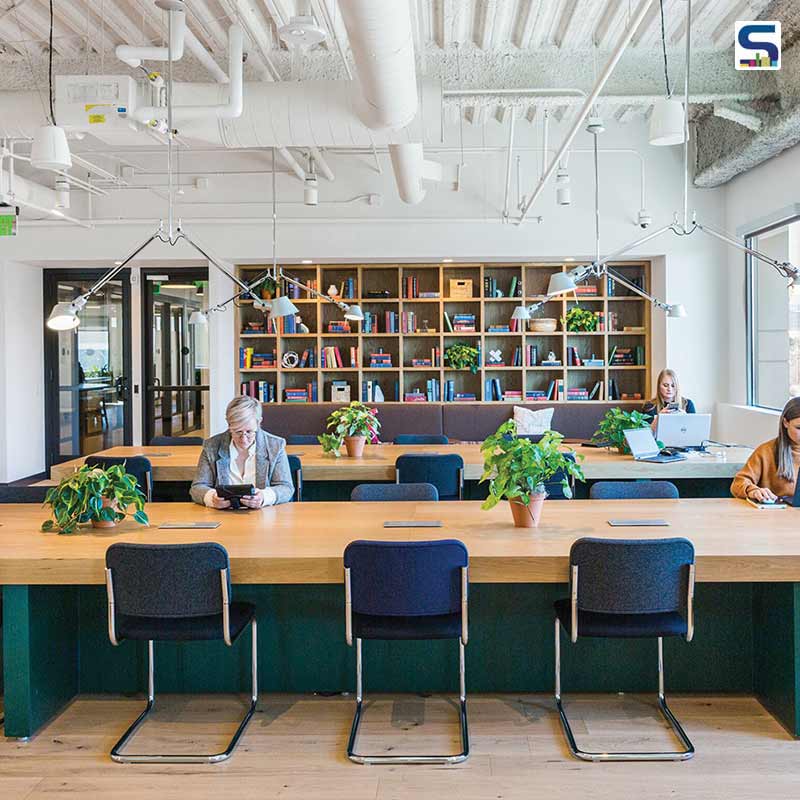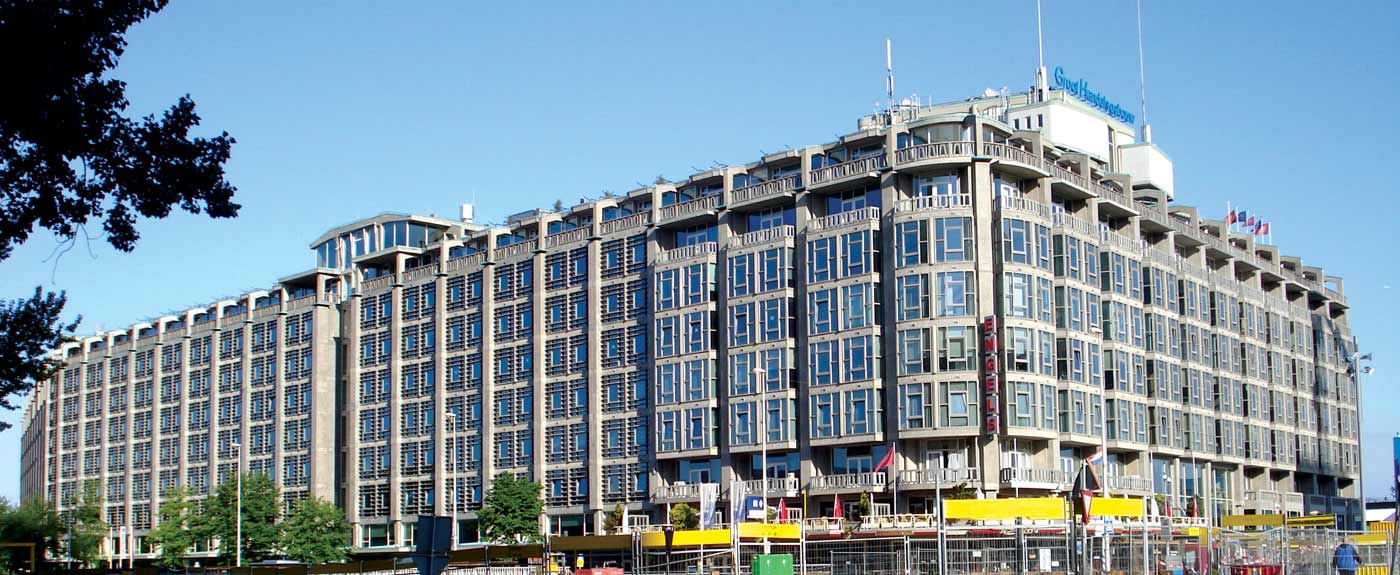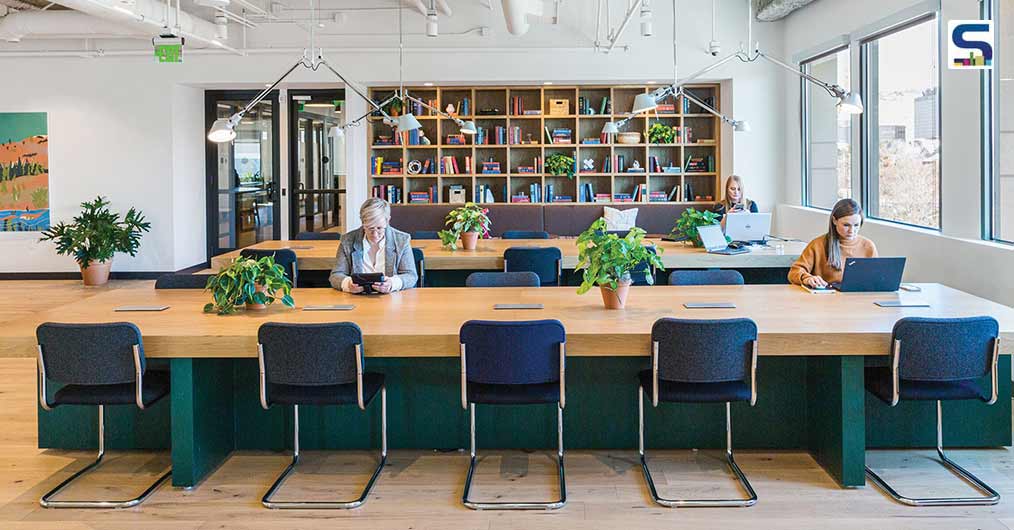
Surfaces Reporter brings forth an exclusive and elaborative report on flex spaces, its fall during the pandemic, a predictable rise in the coming months and the creative opportunities for designers and architects.
Flexible property, commonly referred as flex property or flex space, is a hybrid of office and industrial space. The usual layout for such spaces includes office space on the front with storage or warehousing space at the backend. Flex spaces have the potential of attracting a variety of businesses such as construction, manufacturing, e-commerce, medical and logistical distribution on account of its versatility of spaces for office, warehouse and manufacturing under one roof.
Why flex buildings?
Flex spaces come with multiple benefits. Unlike multi-tenant office buildings, flex spaces are privately accessed by tenants, where they have the liberty of increasing their office or warehouse space as flex spaces have fewer improvement costs and require lower initial investment. However, the strongest benefit of flex space is the lease, where the owner is given the opportunity to avoid any incurring costs. Additionally, the property can be leased for a period of seven months to three years.
The rise of flex market in India
According to a joint report by Colliers and Qdesq, flex space stock is expected to cross 60 mn sqft in metro and non-metro cities by 2023. The total flex stock in non-metro cities is likely to hit 7.8 MSF by 2023, a 50 per cent increase from current levels. Additionally, Ahmedabad, Coimbatore, Indore, Jaipur, Kochi and Lucknow are the top six emerging non-metro locations.

As per Colliers report, Bengaluru has continued to be the top market with a share of 31 per cent of the overall Grade A absorption during the quarter. Pune, interestingly, has pipped larger markets and shared the second spot along with Hyderabad at 17 per cent each. Compared to other cities, demand momentum in Delhi-NCR and Mumbai has been relatively slower as few large deals have been pushed to the subsequent quarters.
Designed to change
Today corporate identity is expressed through workspace design. Architects have started finding smart and sophisticated ways to combine the flow of open plans with functionality of dedicated spaces. Breaking up larger spaces into smaller, flexible areas not only allows one to expand but also helps in maximizing the area.
As per Colliers report, Bengaluru has continued to be the top market with a share of 31 per cent of the overall Grade-A absorption during the quarter.
The main idea of flex space is how it can be conceptualsied by building an environment that can be constructed to adapt. It helps designers and architects to build key design strategies for the multifunctional work environments they create for their clients. Architects and designers have realized that spaces should be favorable to their unique operations, needs and movements. Materials and colours also play a crucial role. Architects have realised that while colour is most often used to enhance space aesthetics, it can also be used to complement wayfinding, identify teams and even communicate unity and equity within an organization. Materials such as laminate floors with brightly coloured walls work well in more creative spaces that include wheeled furniture, while carpeting dampens sound.
Picking up for the lost time: Flex spaces to rise
Post pandemic, after a distinct gap of two years, vacancy across Grade A office markets across the top six cities has not increased for the first time, remaining stable at 18.5 per cent. That said, slower demand has lead to the rise in office vacancy in these two years. Alongside stable vacancy, during Q1 2022, gross absorption has risen almost three times YoY to about 13.0 mn sqft – the highest in two years. This shows that Q1 2022 has been a watershed period for the commercial office sector, with the office sector shrugging off the relatively low demand seen over the last two years.

The office market started picking up since H2 2021, with the momentum continuing onto Q1 2022 too. This has been led by large deals returning to the market, well supported by an infusion of quality supply across the prominent markets. At present, offices have turned out to be more flexible and have evolved in accommodating the changing needs of their employees. Ramesh Nair, CEO, India and Managing Director, Market Development, Asia, Colliers informs, “This quarter has seen occupier confidence swinging back with considerable large-sized deals that accounted for a whopping 55 per cent of the leasing during the quarter. This clearly shows that occupiers are consolidating offices as they prepare for workplace-led innovation and collaboration. If the overall leasing momentum continues, then the year 2022 is likely to be a promising year.”
Future of work is flexible
Overall, technology companies continue to account for a dominant share of the gross absorption, while mainstream corporate continue to explore managed offices, causing flex spaces to open new centres in metro and non-metro cities. To empower people and companies, architects have adapted the shape-shifting model that provides interactive working environments that can be later modified without the need for complex and time-consuming renovations.
Flex space is often confused with flexible workspace or co-working space given the lack of agreed upon definitions in the sector.
- Flex spaces offer private suites; shared amenity space for hybrid work including conference rooms, or onsite cafes; on-site even spaces such as catering, dry cleaning; and enterprise offerings that cater to shared rooms or floors.
- While a flexible workspace is any form of workspace that can be occupied on a flexible basis, a flex space is a space where different departments with completely different responsibilities do their work (eg accounts and warehouse departments).
- A co-working space caters to an area of flexible workspace that is occupied by multiple businesses or individuals without any physical separation between its users.
- Whereas many flex spaces begin with a large, open warehouse or industrial space that is then designed to include any office or retail needs of the business. Co-working or flexible workspaces are a part of flex space.
One of the classic examples of flex building is Groothandelsgebouw in Rotterdam.
- The 128.000 m2 building, designed by Maaskant en Van Tijen, houses commercial spaces that are organized around three courts.
- With a total length of 1 km, roads are stacked on three levels, where 40 per cent of all the commercial spaces are directly accessible by cars and trucks. On the lower level, trucks can deliver goods.
- Five vertical circulation cores and a double horizontal corridor system provide accessibility to all levels.
- The building is flexible in nature, where one could expect a workshop, or a warehouse, or a showroom, or an office behind every window.